On June 6th, the Office of the Ombudsman for DC Public Education and the DC Special Education Hub attended a symposium focused on chronic absenteeism in the District co-sponsored by SchoolTalk DC, Education Forward DC, Center for Health & Health Care in Schools at George Washington University, DC COMBS, EmpowerK12, and Parents Amplifying Voices in Education (PAVE). This issue is of interest to the Ombudsman’s Office because we handle a range of topics and in our work to support families, we see that attendance issues are consistently tied to far too many student success struggles.
The symposium created a space for community partners, schools, and students to come together to increase their understanding of the root causes of chronic absenteeism and discuss strategies that we can use to address it.
Whether you were there alongside us, or unable to make it this time around, keep reading for major takeaways from the discussion, and resources and strategies that anyone can follow.
What is chronic absenteeism?
Chronic absenteeism is defined as a significant pattern of school absence. Specifically, the US Department of Education defines chronic absenteeism as missing 10% or more of the school days during a given school year and includes both excused absences and unexcused absences. Nationwide, chronic truancy reached an all-time high during the COVID-19 pandemic, but it is now estimated that just under 20% of students are chronically absent. In the symposium’s opening presentation and panel discussion, we learned that during the 2023-2024 school year, 40% of students attending DC public or charter schools were chronically absent. This marks a continued decrease in chronic absenteeism over the last couple of school years, highlighting the need for our office to continue engaging with schools, families, and community partners to identify the most effective approaches.
Why attendance matters and how we help.
As mentioned, our office helps students, families, and schools resolve complaints related to public education in DC. We hear first-hand how absences can severely impact a student’s academic performance and overall wellbeing.
For the 2023-2024 school year, chronically absent K-8 students in DC who missed more than one day per week on average were three times less likely to perform on grade level on their spring MAP test or iReady assessment. Each missed day of school was associated with the loss of one point on the CAPE tests for English Language Arts and Math. We also learned that for middle and high school students, their overall wellbeing (physical, social, mental, and academic) is associated with their attendance.
One way that we have been supporting increased attendance in the District’s public schools, and therefore better outcomes for students’ wellbeing, has been through our work with the Office of the Attorney General, supporting mediations related to attendance and truancy. The main goal of each mediation is to increase the student’s attendance by identifying the root causes of their absences, engaging the family, and connecting them to resources that are available from their school, other government offices, and community partners. This partnership highlights the importance of collaboration in addressing the many factors behind chronic absenteeism.
What causes chronic absenteeism? What can we do about it?
During the symposium, we also spent time learning about the root causes of chronic absenteeism in our schools. Often, there are multiple interconnected factors that lead to students disengaging from school. Below, you will find the primary factors that contribute to chronic absenteeism in the District. Along with each barrier to attendance, you will find questions our community leaders were asking to drive the conversation towards identifying strategies and resources to better support our community. Some questions may be helpful to schools and others may be helpful to families as we work towards improving outcomes together. Finally, you will find a list of resources and strategies that were compiled by the organizations that facilitated this event. We hope that these are helpful to anyone interested in learning more about how to improve attendance rates for our District’s students.
|
Barrier:
|
Questions that fueled our discussion: |
Resources & Strategies: |
| Family Support & Resources |
|
Worksheet: Understanding the Root Causes for Student Absenteeism Attendance Intervention Pyramid
|
| Relanships & Engagement |
|
How to Organize and Effective Attendance Team School Tier 1 Strategy: Weekly Class Attendance Updates
|
| Behaviorial & Mental Health |
|
District Tier 1, 2, and 3 Strategies to Reduce Student Absenteeism |
| Phylical Health |
|
Bringing Attendance Home: Videos, Discussion Guides, and Toolkit (English/Spanish) |
| Academic Support & Resources |
|
Three Steps to a More Restorative Attendance Practice Attendance Allies: How Community Support Can Reduce Absenteeism |
| Basic Needs |
|
|
| Transporation |
|
What’s next?
As our office looks forward, we remain thoughtful and collaborative partners that schools, families, and students can reach out to as they work on solutions for chronic absenteeism and other school issues. For the last year, our work has been focused on four key priorities. These priorities, which include supporting family engagement, safety, special education, and connected schools, drive our work. We especially champion connected schools (also known as “community schools”), as there are numerous benefits to providing wrap-around services tied to the unique needs of each school and the families they serve. We support schools becoming centers for learning, fellowship, and resources, and know that schools are the heartbeat of each community.
Along with this, we recognize that families are at the core of our work. This past year, we have hosted over 40 events that have brought together schools, families, and community partners. We look forward to continuing to keep parents aware of the resources and services available in the District. We invite you to sign up for our newsletter, where we will share upcoming events from the Office of the Ombudsman for DC Public Education and the DC Special Education Hub.

